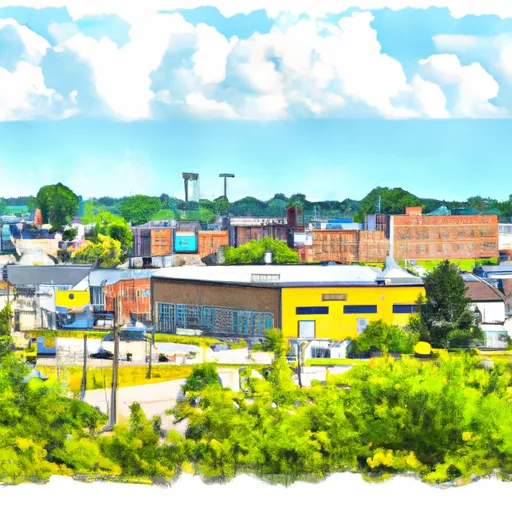-
 Snoflo Premium
Snoflo Premium
Get unlimited access to all our content
With no Ad interruptions! - Start Your Free Trial Login with existing account
Sumner
Eden Index
Climate
8.5
•
Recreation
2.8
•
Community
•
Safeguard
4.4/10

Sumner, Michigan is a small rural community located in Gratiot County. The region experiences a humid continental climate, characterized by four distinct seasons. Summers in Sumner are warm and moderately humid, with average temperatures ranging from the mid-70s to low 80s Fahrenheit. Winters are cold, with temperatures typically dropping below freezing, and the area receives a moderate amount of snowfall.
As for hydrology constituents, Sumner is surrounded by various small lakes and ponds, making it a great destination for water-related outdoor activities. Fishing enthusiasts can enjoy angling for species like bass, pike, and panfish in these local water bodies. Additionally, the region is dotted with several rivers and streams, providing opportunities for kayaking, canoeing, and wildlife observation.
Sumner is also blessed with abundant natural beauty, including lush forests and parks. Outdoor recreation enthusiasts can explore the numerous hiking trails, indulge in camping, or go hunting in designated areas. The diverse flora and fauna in the vicinity provide ample opportunities for birdwatching and wildlife photography.
Overall, Sumner, Michigan offers a pleasant climate, diverse hydrology constituents, and a range of outdoor recreational activities for nature lovers to enjoy.
What is the Eden Index?
The Snoflo Eden Index serves as a comprehensive rating system for regions, evaluating their desirability through a holistic assessment of climate health, outdoor recreation opportunities, and natural disaster risk, acknowledging the profound impact of these factors on livability and well-being.
Climate Health Indicator (CHI): 8.5
Sumner receives approximately
834mm of rain per year,
with humidity levels near 79%
and air temperatures averaging around
9°C.
Sumner has a plant hardyness factor of
5, meaning
plants and agriculture in this region thrive during a short period during spring and early summer. Most
plants will die off during the colder winter months.
By considering the ideal temperature range, reliable water supplies, clean air, and stable seasonal rain or snowpacks, the Climate Health Indicator (CHI) underscores the significance of a healthy climate as the foundation for quality living.
A healthy climate is paramount for ensuring a high quality of life and livability in a region, fostering both physical well-being and environmental harmony. This can be characterized by ideal temperatures, reliable access to water supplies, clean air, and consistent seasonal rain or snowpacks.
Weather Forecast
Streamflow Conditions
Saginaw
Area Rivers
Saginaw
Snowpack Depths
Saginaw
Reservoir Storage Capacity
Saginaw
Groundwater Levels
Recreational Opportunity Index (ROI): 2.8
The Recreational Opportunity Index (ROI) recognizes the value of outdoor recreational options, such as parks, hiking trails, camping sites, and fishing spots, while acknowledging that climate plays a pivotal role in ensuring the comfort and consistency of these experiences.
Access to outdoor recreational opportunities, encompassing activities such as parks, hiking, camping, and fishing, is crucial for overall well-being, and the climate plays a pivotal role in enabling and enhancing these experiences, ensuring that individuals can engage in nature-based activities comfortably and consistently.
Camping Areas
| Campground | Campsites | Reservations | Toilets | Showers | Elevation |
|---|---|---|---|---|---|
| Maple Bay - State Forest | 38 | 600 ft | |||
| Burt Lake State Park | 300 | 610 ft | |||
| Camp Petosega | None | 673 ft | |||
| Coldwater Lake Family Park | None | 877 ft | |||
| Branch County Fairgrounds RV | None | 961 ft | |||
| Marble Lake County Park | None | 995 ft | |||
| Eaton County Fairgrounds | 340 | 880 ft | |||
| Petoskey State Park | 165 | 600 ft | |||
| Swains Lake | None | 994 ft | |||
| Maple River Campground | 60 | 677 ft |
Nearby Ski Areas
Catastrophe Safeguard Index (CSI):
The Catastrophe Safeguard Index (CSI) recognizes that natural disaster risk, encompassing floods, fires, hurricanes, and tornadoes, can drastically affect safety and the overall appeal of an area.
The level of natural disaster risk in a region significantly affects safety and the overall livability, with climate change amplifying these risks by potentially increasing the frequency and intensity of events like floods, fires, hurricanes, and tornadoes, thereby posing substantial challenges to community resilience and well-being.
Community Resilience Indicator (CRI):
The Community Resilience Indicator (CRI) recognizes that education, healthcare, and socioeconomics are crucial to the well-being of a region. The CRI acknowledges the profound impact of these elements on residents' overall quality of life. By evaluating educational resources, healthcare accessibility, and economic inclusivity, the index captures the essential aspects that contribute to a thriving community, fostering resident satisfaction, equity, and social cohesion.

